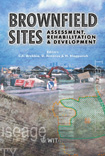City Of Hopwell, Virginia – Learning To Deal With Its Industrial Legacy
Price
Free (open access)
Transaction
Volume
55
Pages
Published
2002
Size
508 kb
Paper DOI
10.2495/BF020051
Copyright
WIT Press
Author(s)
E. Bogdan
Abstract
City of Hopewell, Virginia - learning to deal with its industrial legacy E. Bogdan Earth Tech, Inc., USA Abstract The City of Hopewell is a perfect example of an American \“Brownfields community.” E. I. DuPont de Nemours purchased 1,800 acres along the James River in 1915 for the production of gunpowder. Over 25,000 employees aided in the manufacture of munitions for World War I. That plant was one of the first of many to be located in Hopewell, a community isolated from Virginia’s capitol, Richmond. Unbridled growth and virtually unregulated chemical waste disposal led to contamination of Hopewell’s air, water, and soil. Many industrial properties in Hopewell now lay \“idle, abandoned, or underutilized.” Most are either contaminated or have been affected by nearby contamination. The resultant blight and threat to human health and the environment have thwarted past community redevelopment efforts. The City of Hopewell has now tied its future directly to the cleanup and redevelopment of the Exeter property, located in close proximity to downtown, and within view of the old DuPont property. Cleanup will lead to reuse as an area shopping mall, but more significantly will foster refurbishment of Hopewell’s downtown area and future cleanup and redevelopment of other nearby industrial \“Brownfields” properties. Hopewell is looking to its industrial past for the promise of its economic future. 1 Introduction Hopewell’s 20th century industrial history makes it a perfect 2lst century candidate for the designation \“Brownfields community.” To date, 15% of the city’s 11.3 square miles has been targeted for Brownfields redevelopment. The Exeter property is the first of many such properties projected to be remediated,
Keywords




